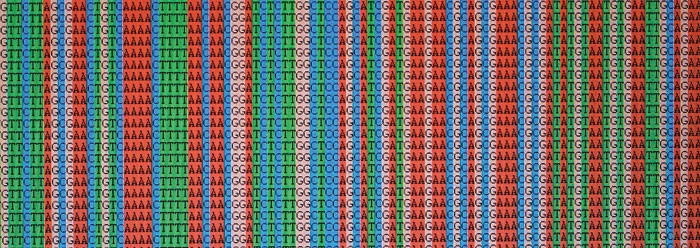The life sciences research team at ICR has recently focused on the cell’s telomere features, a chromosome end-capping system found in the cells of plants and animals that provides a variety of important features to protect the ends of linear chromosomes. The telomere is a uniquely designed mechanism that makes higher forms of cell life possible, in contrast to single-cell bacteria that have simpler, circular chromosomes.1
Telomeres are complex structures involving RNA, DNA, and proteins that have both structural and dynamic regulatory features. The basic chromosomal DNA sequence of the telomere is a very long string of 6-base subunits (TTAGGG) that are repeated in tandem and can extend up to 5,000 to 15,000 bases in total length.2
Many scientists were surprised when short sections of telomere sequences also began to be discovered in the internal regions of chromosomes. At first, scientists thought that these internal telomere sequences (ITLS) were genetic mistakes and served no useful purpose.3 In fact, a number of scientists thought that ITLS could be dangerous and tried to associate them with diseases, cancer, and chromosome breakage.
However, later research showed that these anomalies were primarily associated with other sequences that were physically close to the ITLS and had nothing to do with their presence.4 Still other studies have shown that the presence of telomere sequences within internal regions of chromosomes affects gene expression by changing the conformational (3-dimensional) properties of the DNA.5 As is typical of the evolutionary paradigm, scientists started out with the premise that ITLS were freak accidents of nature, disruptive to the genome, and most likely associated with diseases. As is also typical of the evolutionary paradigm, despite this negative approach, evolutionists concluded that these structures have function and purpose within the genome.
At ICR, we are attempting to more specifically characterize ITLS sequences and generate a comprehensive picture of these sites in the human genome. Software has been developed that scans entire chromosomes and identifies and characterizes ITLS.6 Our preliminary data indicate that there are many tens of thousands of these within every chromosome (not including the telomere end-caps). We are attempting to identify these ITLS and see what types of genomic patterns they are arranged in.
Perhaps the ITLS are needed to help control the complex arrangement of DNA within the cell’s nucleus. The TTAGGG repeat forms a specific type of unique quadruplex structure, and the telomere sequence may be critical as a functional feature in helping to determine the proper 3-D structure of the genome. The study of gene expression within 3-D fields of view is a new area of biology now yielding many exciting results.7 The genome operates in a highly complicated 3-D system with multiple levels of highly designed control features. Perhaps the usage of telomere repeats sprinkled throughout the internal regions of chromosomes is a key functional part of creation’s overall design.
References
- For a thorough review on telomere biology, see Tomkins, J. P. and J. Bergman. 2011. Telomeres: implications for aging and evidence for intelligent design. Journal of Creation. 25 (1): 86-97.
- Ibid.
- Lin, K.W. and J. Wan. 2008. Endings in the middle: current knowledge of interstitial telomeric sequences. Mutation Research. 658 (1-2): 95-110.
- Ibid.
- Revaud, D. J. et al. 2009. Sequence-driven telomeric chromatin structure. Cell Cycle. 8 (7): 1099-1100.
- Tomkins, J. 2011. Ongoing Telomere Research at Odds with Human-Chimp Chromosome 2 Model. Acts & Facts. 40 (11): 6.
- Keim, B. The Human Genome in 3 Dimensions. Wired Science. Posted on wired.com October 8, 2009.
* Dr. Tomkins is Research Associate at the Institute for Creation Research and received his Ph.D. in Genetics from Clemson University.
Cite this article: Tomkins, J. 2012. Internal Telomere Sequences: Accidents of Evolution or Features of Functional Design? Acts & Facts. 41 (2): 6.




